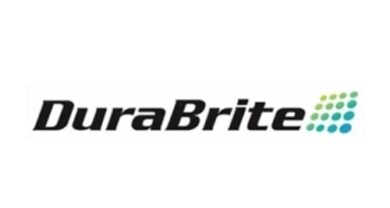Room To Grow
The pontoon market may be down by 20 to 25 percent. But Manitou Pontoon Boats isn’t.
Unit sales at the Lansing, Mich.-based company are flat, dollar sales are up and profitability has remained “good,” according to Greg VanWagenen, Manitou director of marketing and communications.
A big part of its success, relative to the market, is the result of dealer network growth. Last spring, it had only 78 dealers. But as of June, Manitou — which is the ninth or tenth largest player in the pontoon market — had 106, with expectations of continued expansion this summer, according to VanWagenen.
Many of these new dealers are expected to come from places like Canada, the West Coast, Texas and Ohio — regions in which Manitou historically hasn’t had much of a presence, but in which it’s gaining ground. Some are wakeboard boat or powersports dealers, but most are already in the pontoon market.
“We’ve been able to get in the door because some pontoon boat builders are not doing their dealers justice,” VanWagenen says.
Download Room To Grow
Among the benefits Manitou says it offers dealers are a new dealer discount program for those launching the Manitou brand in new territories, “substantial” territory protection, boat packages with “all the major motor lines” and freight savings. Manitou uses its own trucks to ship its boats, allowing the company to ship up to six pontoons on one truck, he explains. In addition, the company has received attention for winning NMMA CSI and J.D. Power & Associates awards.
Manitou also pays the full shop labor rate for warranty reimbursement, an offering that VanWagenen says is very important to dealers concerned about service.
“We want the customer taken care of very well and as quickly as possible,” he explains. “The boats of companies that aren’t paying full shop rate get pushed to the back of the line. With our boats, the dealers know that mechanic is making the same amount [as they would on non-warranty work] so the customer gets taken care of quickly.”
Another factor in Manitou’s success has been its Sport Handling Package (SHP) Performance Hull with V-Toon Technology, which is an option on many of its models. While other manufacturers also offer performance hulls, VanWagenenn says Manitou’s V-Toon Test Drive Challenge has encouraged consumers to compare the driving experience and make their own decisions.
Last year, SHP-equipped boats made up 33 percent of total sales for the company. This year, that number climbed to 40 percent. Because SHP boats are more profitable for Manitou than its other models, its profitability hasn’t been as hard hit as many other North American boat builders.
It doesn’t hurt that Manitou has completely redesigned its product lineup for the 2009 model year in an effort to improve the look and feel of the boat to better cater to families.
“We’re on pace to sell 1,200 boats again this year,” says VanWagenen. “Our plan is to crack the Top 5 [biggest pontoon boat builders] by selling 2,000 to 2,500 boats per year. The goal was originally set to be reached in 2010, and we’re going to do our best, despite the economy, to get there.”
B.I. Book Club: Awakening the Entrepreneur Within
A number of articles I’ve read lately have made it quite clear that thinking creatively about our businesses is the key to surviving this tough economy. An entrepreneurial mindset that helps us create new products and services for our businesses and new experiences and opportunities for our customers will help us diversify and ultimately differentiate ourselves from the competition.
Michael E. Gerber’s new book, “Awakening the Entrepreneur Within,” represents a solid effort toward helping business owners understand how “ordinary people can create extraordinary companies.” Frankly, I had been so taken by the small business classic “The E-Myth Revisited,” which was also penned by Gerber (see the July issue of Boating Industry if you’d care to read my thoughts on it), that I had to scoop up this book even en route to my vacation last spring.
Gerber does an excellent job, as he had done in the “E-Myth,”
of illustrating the needs small business owners have for entrepreneurial thinking. His work as an author and consultant has always been motivated toward correcting his
observation that “every small business I walked into seemed to be a collection of broken pieces, and seemed to fail in the most
fundamental ways.”
This book, however, didn’t win me over the way “E-Myth” did. Sure, it is inspirational in its concept, but it just didn’t provide the hard-and-fast “how-to” that seemed to cement the validity of his “E-Myth” preachings. There are hints and pieces of it, but for the most part, the book tends to lean toward inspirational story telling.
In the end, the book is an easy read, and it complements the “E-Myth” products fairly well. Just don’t expect to finish it with a detailed road map to achieving that new level of creativity. — BY MATT GRUHN




